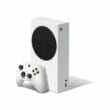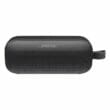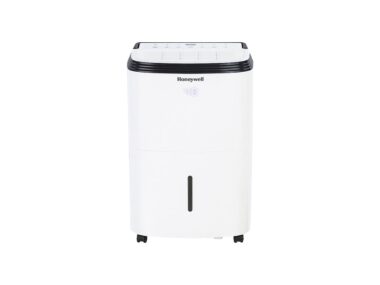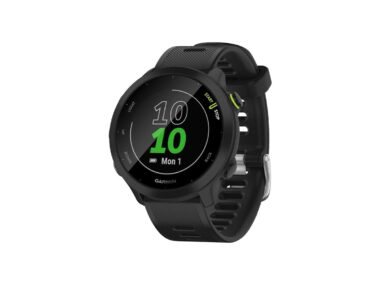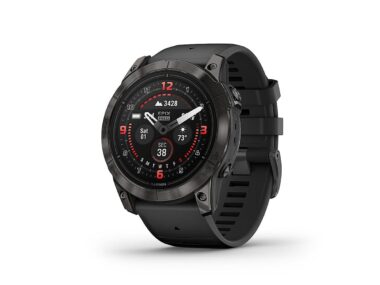Table of Contents
Key Features of DJI Mini 3 Pro Drone and Remote Control with Built-in Screen
The DJI Mini 3 Pro Drone is a compact and lightweight drone, specifically designed for users ranging from beginners to those desiring a discreet aerial device for populated or low-altitude areas. Here are its unique features:
- Compact Design: Weighing under 249g, it offers a subtle presence, differentiating itself from the louder Mavic 3 Classic.
- Camera: Boasts an impressive 4K at 60FPS camera with vibrant colors, eliminating the need for post-processing. It also provides HDR photography and the camera’s f/1.7 aperture aids in recording clear details, especially in low-light settings.
- Innovative Gimbal: Allows upward and vertical shots without compromising resolution.
- Stability: Despite its small stature, the drone remains stable in moderate winds, able to hover steadily even at wind speeds of 35 MPH.
- Extended Flight Time: It promises a flight duration of 34 to 45 minutes.
- Remote Control: The controller has a built-in touch screen that remains visible even under direct sunlight. It also comes with customizable buttons that enable functions like gimbal re-centering and hyper-lapse control speed adjustments.
- Safety and Connectivity: It features 3-way obstacle avoidance, DJI O3 transmission, and APAS 4.0 to ensure safety during flight. The drone can also maintain robust reception for up to a mile or two, overcoming challenges like trees and buildings.
- Creative Features: The drone comes with creative tools like FocusTrack, and QuickTransfer for fast content sharing to mobile devices, and QuickShots for advanced shooting techniques.
In essence, the DJI Mini 3 Pro is a top choice for both novices and experienced users looking for a capable, cost-effective, and less noisy drone alternative.
Specification
| Feature Category | Specification Detail |
|---|---|
| Aircraft | – Takeoff Weight: <249 g |
| – Dimensions (L×W×H): Folded – 145×90×62 mm; Unfolded – 171×245×62 mm; Unfolded (with propellers) – 251×362×70 mm | |
| – Diagonal Length: 247 mm | |
| – Max Ascent Speed: 5 m/s (S Mode), 3 m/s (N Mode), 2 m/s (C Mode) | |
| – Max Descent Speed: 5 m/s (S Mode), 3 m/s (N Mode), 1.5 m/s (C Mode) | |
| – Max Speed: 16 m/s (S Mode), 10 m/s (N Mode), 6 m/s (C Mode) | |
| – Max Service Ceiling Above Sea Level: 4000 m with Intelligent Flight Battery; 3000 m with Intelligent Flight Battery Plus | |
| – Max Flight Time: 34 mins with Intelligent Flight Battery; 47 mins with Intelligent Flight Battery Plus | |
| – Max Hovering Time: 30 mins with Intelligent Flight Battery; 40 mins with Intelligent Flight Battery Plus | |
| – Max Flight Distance: 18 km with Intelligent Flight Battery; 25 km with Intelligent Flight Battery Plus | |
| – Max Wind Speed Resistance: 10.7 m/s (Level 5) | |
| Sensing System | – Forward: Precision Measurement Range: 0.39-25 m; Effective Sensing Speed: <10.5 m/s; FOV: Horizontal 106°, Vertical 90° |
| – Backward: Precision Measurement Range: 0.36-23.4 m; Effective Sensing Speed: <8 m/s; FOV: Horizontal 58°, Vertical 73° | |
| – Downward: Precision Measurement Range: 0.15-9 m; Precise Hovering Range: 0.5-12 m; Vision Sensor Hovering Range: 0.5-30 m; Effective Sensing Speed: <3 m/s; FOV: Forward/Backward 104.8°, Left/Right 87.6° | |
| Gimbal | – Mechanical Range: Tilt -135° to 80°, Roll -135° to 45°, Pan -30° to 30° |
| – Controllable Range: Tilt -90° to 60°, Roll -90° or 0° | |
| – Stabilization: 3-axis mechanical gimbal (tilt, roll, pan) | |
| – Max Control Speed (tilt): 100°/s | |
| – Angular Vibration Range: ±0.01° | |
| Camera | – Sensor: 1/1.3-inch CMOS, Effective Pixels: 48 MP |
| – Lens: FOV 82.1°, Format Equivalent: 24 mm, Aperture: f/1.7, Focus Range: 1 m to ∞ | |
| – ISO Range: Video 100-6400 (Auto/Manual), Photo 100-6400 (Auto/Manual) | |
| – Shutter Speed: Electronic Shutter 2-1/8000 s | |
| – Max Image Size: 8064 × 6048 | |
| – Still Photography Modes: Single Shot, Burst Shooting, Timed, AEB, Panorama, HDR | |
| – Photo Format: JPEG/DNG (RAW) | |
| – Video Resolution: 4K, 2.7K, FHD, Slow Motion | |
| – HDR Mode: Supported in Photo and Video | |
| – Video Format: MP4/MOV (H.264/H.265) | |
| Video Transmission | – Video Transmission System: DJI O3 |
| – Live View Quality: 1080p/30fps | |
| – Operation Frequency: 2.400-2.4835 GHz, 5.725-5.850 GHz | |
| – Transmitter Power (EIRP): 2.4 GHz: <26 dBm (FCC), <20 dBm (CE/SRRC/MIC); 5.8 GHz: <26 dBm (FCC/SRRC), <14 dBm (CE) | |
| – Communication Bandwidth: 1.4MHz/3MHz/10MHz/20MHz/40MHz | |
| – Latency: Approx. 120 ms (Aircraft + Remote Controller) | |
| – Max Video Bitrate: 18 Mbps (Aircraft + Remote Controller) | |
| – Max Download Bitrate: 5.5 MB/s (DJI O3, RC-N1 Remote Controller and DJI RC), Wi-Fi 5: Max 25 MB/s | |
| – Max Transmission Distance (free of interference): FCC: 12 km; CE: 8 km; SRRC: 8 km; MIC: 8 km | |
| Wi-Fi | – Protocol: 802.11 a/b/g/n/ac |
| – Transmitter Power (EIRP): 2.400-2.4835 GHz: <19 dBm (FCC/CE/SRRC/MIC); 5.725-5.850 GHz: <20 dBm (FCC/SRRC), <14 dBm (CE) | |
| Bluetooth | – Protocol: Bluetooth 5.2 |
| – Transmitter Power (EIRP): 2.400-2.4835 GHz: <8 dBm | |
| Batteries | – Intelligent Flight Battery: 2453 mAh, 7.38 V, 18.1 Wh |
| – Intelligent Flight Battery Plus: 3850 mAh, 7.38 V, 28.4 Wh | |
| Memory Cards | – Supported: UHS-I Speed Class 3 or above; Recommended: SanDisk Extreme, SanDisk Extreme Pro, Kingston Canvas Go!Plus, Lexar High Endurance, Lexar 667x, Lexar 1066x, etc. |
| Remote Controllers | – DJI RC-N1: Max Battery Time: 6 hrs (without charging any mobile device), 4 hrs (when charging a mobile device); Supported Port Types: Lightning, Micro-USB (Type-B), USB-C |
| – DJI RC (Model RM330): Max Battery Life: Approx. 4 hours | |
| App Compatibility | – DJI Fly App; Required OS: iOS v11.0 or later, Android v6.0 or later |
Performance
The DJI Mini 3 Pro is designed for a range of users, from beginners to experienced drone enthusiasts. Several reviewers have highlighted its impressive performance in various day-to-day scenarios:
- Camera Quality: It features a robust camera capable of shooting 4K videos at 60FPS. This enhanced camera quality offers users vibrant and detailed videos and photos, even in challenging lighting conditions, thanks to its f/1.7 aperture and the ability to capture intricate light/shadow details.
- Stability and Flight Time: With an impressive flight time of up to 34 minutes, it provides users ample time to capture their desired shots. Furthermore, despite its compact and lightweight design, the drone exhibits commendable stability even in windy conditions.
- Remote Control: The new RC controller with a built-in screen significantly improves the flying experience and composition, providing real-time feedback to the user.
- Advanced Features: The drone is equipped with advanced features like ActiveTrack 4.0, QuickShots, and a versatile gimbal design that facilitates vertical shots, making it a powerhouse for content creation, both for novice and seasoned users.
- Obstacle Avoidance: DJI Mini 3 Pro’s performance is further enhanced with features like obstacle sensors, ensuring safe and hassle-free flights.
- Day-to-Day Usage Feedback: Some reviewers have noted specific issues, such as white balance and range concerns. However, its strengths in camera quality, flight stability, and advanced features seem to overshadow these concerns for many users.
In summary, the DJI Mini 3 Pro offers a balance of advanced features, camera quality, and stability, making it a favorable choice for daily usage by both beginners and experienced drone enthusiasts.
Pros
- Advanced Features: The DJI Mini 3 Pro comes with upgraded features including 4K/60FPS video, Active Track 4.0, and obstacle sensors.
- Compact Design: It has a compact design, making it suitable for various users including travelers and content creators.
- Battery Life: Offers multiple battery options including a standard version (35 mins) and a Plus version (47 mins).
- Quality Camera: The drone provides quality imaging with features like a fast aperture, vertical mode, 48MP photography, and HDR video.
- Quiet Operation: The DJI Mini 3 Pro operates quietly, which is beneficial for discrete operations.
- Improved Flight Modes: Comes with intelligent flight modes and advanced features like Quickshots, Mastershots, and Hyperlapse.
Cons
- Weight Issues in Europe: Sales in Europe are affected due to weight classification.
- Occasional Issues: During testing, there were occasional issues like range problems with the DJI RC, white-out problems, and internal lens fogging.
- Lacks Some Features: Mini 3 is a more basic version and lacks features like obstacle avoidance tech found in the Pro version.
- Limited Utility for Some Professionals: While great for beginners and most users, it might not be ideal for all professional users due to limitations in advanced features.
Conclusion
The DJI Mini 3 Pro Drone and its accompanying Remote Control with a built-in screen are groundbreaking additions to the DJI product line, designed specifically to bridge the gap between entry-level and professional drone equipment.
- Compact and Powerful: The Mini 3 Pro, despite its compact design weighing under 250 grams, houses a camera that delivers 4K at 60FPS, resulting in vibrant colors and intricate details. Its lightweight design doesn’t require registration in many jurisdictions due to its weight.
- Advanced Features: The drone is equipped with a 1/1.3-inch CMOS sensor with dual native ISO and HDR support, making it perform outstandingly in diverse lighting conditions. It’s also notable for its True Vertical Shooting, enabling seamless portrait and landscape transitions, and MasterShots for cinematic sequences.
- Controller Innovations: The bundled RC controller comes with a built-in touchscreen, making real-time monitoring easier in direct sunlight, and offers customizable buttons for advanced gimbal and speed adjustments.
- Impressive Flight Time: One standout feature is its flight time. While many drones in this category often have limited flight durations, the DJI Mini 3 Pro offers between 34 to 47 minutes depending on battery configurations.
- For Everyone: Both beginners and experienced creators will appreciate the drone’s capabilities. While LA-based photographer Andrew Wille lauds its quality, the drone remains an excellent choice for beginners due to its portability, stability in windy conditions, and quiet operation.
In conclusion, the DJI Mini 3 Pro Drone embodies a blend of performance and portability, making it a choice tool for both novices and experienced drone enthusiasts. The built-in screen on the remote control further enhances the user experience, simplifying operations and offering real-time insights during flights.
FAQs
-
What are some of the major upgrades in the DJI Mini 3 Pro?
The DJI Mini 3 Pro features improvements like better battery life, HDR support, obstacle sensing, and a 47-minute flight time. It utilizes DJI O3 FHD video transmission and the Intelligent Flight Battery Plus.
-
How can I activate the DJI Mini 3 Pro?
Activation can be accomplished through the DJI Fly app or the DJI RC-N1 Remote Controller.
-
Is the DJI Mini 3 Pro waterproof?
No, the DJI Mini 3 Pro isn’t waterproof.
-
What is the maximum wind speed the drone can handle?
The drone can withstand wind speeds up to 10.7 m/s.
-
What video quality can I expect?
The drone supports Manual mode and HDR for photos and videos, with 4K/30fps delivering the highest quality.
-
How does the DJI RC store footage?
DJI RC employs an external microSD card for storage.
-
How can I update the firmware?
Updates should be conducted using the DJI Fly app, ensuring no interruptions during the process.
-
Which accessories and devices are compatible with the DJI Mini 3 Pro?
It’s compatible with DJI RC-N1, various accessories, DJI Goggles 2, DJI Goggles Integra, and DJI RC Motion 2.

